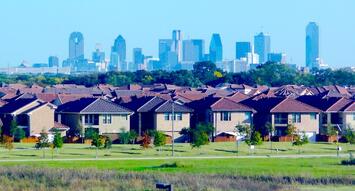
“America’s treasured cities,” writes semi-libertarian Jeffrey Tucker, are in “grave danger.” He believes that people are leaving cities to get away from “forced closures and then vaccine mandates and compulsory segregation by vaccine status” due to the pandemic. He doesn’t consider the possibility that people didn’t want to be in cities in the first place and were all too happy to use the pandemic as an excuse to leave.
Before the pandemic, urbanists were chortling about the “triumph of the city.” World population data showed that urban areas were growing while rural numbers were shrinking. In citing these data, urbanists conflated “urban areas” and “cities” to make their case, effectively arguing that more people moving to the suburban parts of urban areas meant that more people wanted to live in the dense central cities.
Yet that clearly was not the case. According to 2020 census data, the nation’s 100 largest cities that are not suburbs of other cities collectively housed less than 64 million people, less than 20 percent of the nation’s population. The smallest of these 100 cities have about 200,000 residents. With 20 percent of people living in small (under 5,000) towns or rural areas, that left 60 percent of people living in suburbs or small cities (5,000 to 200,000). That hardly sounds like a triumph of big, dense cities.
Moreover, as the Antiplanner has pointed out before, a 2018 Gallup poll found that 40 percent of people who lived in big cities wanted to live somewhere else, mostly suburbs or rural areas. A 2021 repeat of that poll found that the share of people who wanted to live in big cities declined only slightly (from 12 to 11 percent), so the pandemic didn’t significantly change where people wanted to live; it only enabled more people to live where they wanted to.
Tucker is the founder of the Brownstone Institute, an organization opposed to government mandates, especially those related to the pandemic. So Tucker looked at the data showing people moving to suburbs, small towns, and rural areas and blamed the trend on the policies he opposed rather than on people’s genuine desires to live in such areas. Yet people weren’t “forced” to move out of big cities, as he claims; they did so because they wanted to even before the pandemic.
Large, dense cities are an artifact of a time when most urban jobs were in downtown factories and walking was the only transportation affordable to most factory workers. Those conditions began to change more than a century ago and, as a result, most major U.S. cities lost population between 1950 and 2000. The pandemic merely accelerated this trend.
If Tucker were a true libertarian, he wouldn’t be muttering about “treasured cities” or imagining there is some sort of Anthony Fauci-inspired secret plan to depopulate those cities. Instead, he would be celebrating that more people are able to leave the crowded, congested, polluted central cities in favor of whatever lifestyles they prefer more.
This piece first appeared at The Antiplanner.
Randal O'Toole, the Antiplanner, is a policy analyst with nearly 50 years of experience reviewing transportation and land-use plans and the author of The Best-Laid Plans: How Government Planning Harms Your Quality of Life, Your Pocketbook, and Your Future.
Photo: Andreas Praefcke via Wikimedia, under CC 2.0 License












